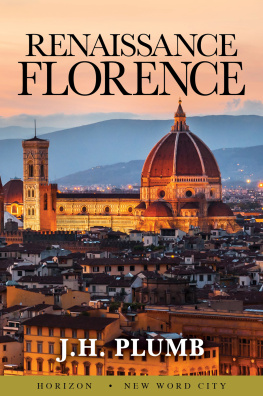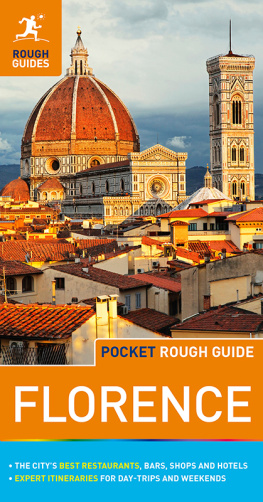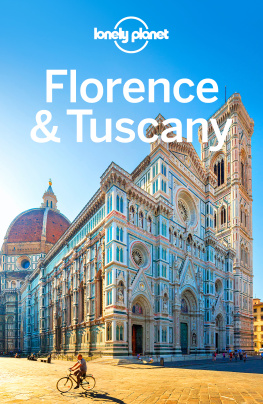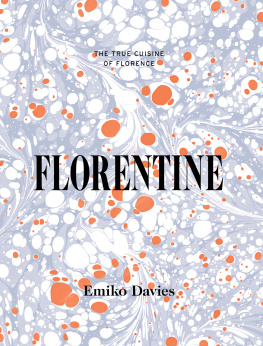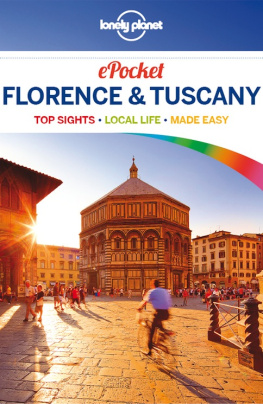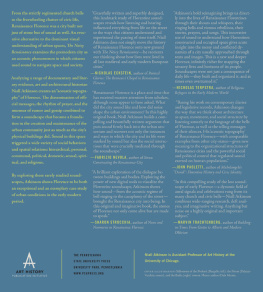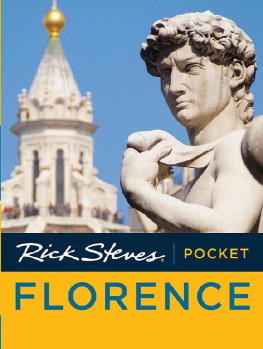Puett J. David - Renaissance art et science @ Florence
Here you can read online Puett J. David - Renaissance art et science @ Florence full text of the book (entire story) in english for free. Download pdf and epub, get meaning, cover and reviews about this ebook. City: Florenz, year: 2016, publisher: Truman State University, genre: Romance novel. Description of the work, (preface) as well as reviews are available. Best literature library LitArk.com created for fans of good reading and offers a wide selection of genres:
Romance novel
Science fiction
Adventure
Detective
Science
History
Home and family
Prose
Art
Politics
Computer
Non-fiction
Religion
Business
Children
Humor
Choose a favorite category and find really read worthwhile books. Enjoy immersion in the world of imagination, feel the emotions of the characters or learn something new for yourself, make an fascinating discovery.

- Book:Renaissance art et science @ Florence
- Author:
- Publisher:Truman State University
- Genre:
- Year:2016
- City:Florenz
- Rating:5 / 5
- Favourites:Add to favourites
- Your mark:
- 100
- 1
- 2
- 3
- 4
- 5
Renaissance art et science @ Florence: summary, description and annotation
We offer to read an annotation, description, summary or preface (depends on what the author of the book "Renaissance art et science @ Florence" wrote himself). If you haven't found the necessary information about the book — write in the comments, we will try to find it.
Renaissance art et science @ Florence — read online for free the complete book (whole text) full work
Below is the text of the book, divided by pages. System saving the place of the last page read, allows you to conveniently read the book "Renaissance art et science @ Florence" online for free, without having to search again every time where you left off. Put a bookmark, and you can go to the page where you finished reading at any time.
Font size:
Interval:
Bookmark:
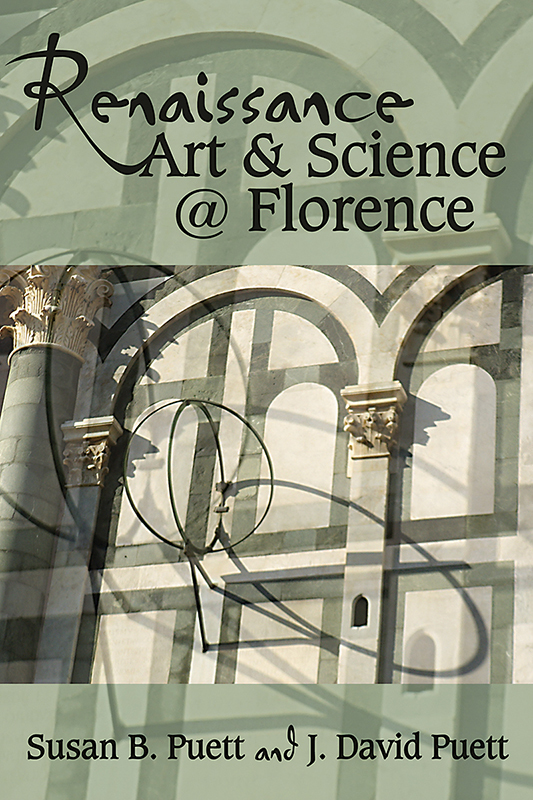
Habent sua fata libelli
Early Modern Studies Series
General Editor
Michael Wolfe
Queens College, CUNY
Editorial Board of Early Modern Studies
Elaine Beilin
Framingham State College
Christopher Celenza
Johns Hopkins University
Barbara B. Diefendorf
Boston University
Paula Findlen
Stanford University
Scott H. Hendrix
Princeton Theological Seminary
Jane Campbell Hutchison
University of WisconsinMadison
Mary B. McKinley
University of Virginia
Raymond A. Mentzer
University of Iowa
Robert V. Schnucker
Truman State University, Emeritus
Nicholas Terpstra
University of Toronto
Margo Todd
University of Pennsylvania
James Tracy
University of Minnesota
Merry Wiesner-Hanks
University of WisconsinMilwaukee
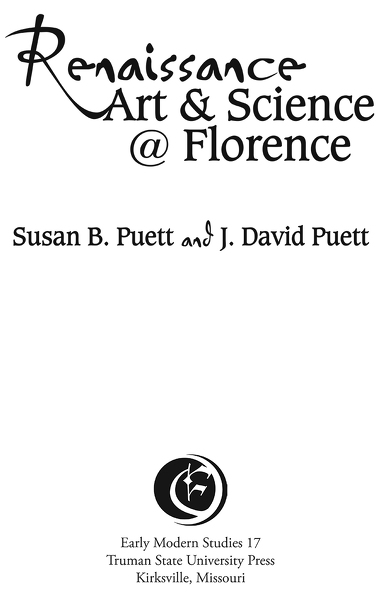
Copyright 2016 Truman State University Press, Kirksville, Missouri, 63501
All rights reserved
tsup.truman.edu
Cover art: Egnazio Danti, Equinoctial armillary (1574), faade of the Church of Santa Maria Novella (photograph by Sailko, retrieved from Wikimedia Commons, GNU Free Documentation License).
Cover design: Lisa Ahrens (artistic modification of photo by Sailko).
The Library of Congress has catalogued the printed edition as follows:
Library of Congress Cataloging-in-Publication Data
Names: Puett, Susan B., 1939- author. | Puett, J. David, 1939- author.
Title: Renaissance art and science @ Florence / Susan B. Puett and J. David Puett.
Other titles: Renaissance art and science at Florence
Description: Kirksville, Missouri : Truman State University Press, 2016. |
Series: Early modern studies ; 16 | Includes bibliographical references.
Identifiers: LCCN 2016033641 (print) | LCCN 2016033805 (ebook) | ISBN
9781612481852 (pbk.) | ISBN 9781612481388
Subjects: LCSH: Art and scienceItalyFlorenceHistory. |
Renaissance--Italy--Florence. | Florence (Italy)--Civilization.
Classification: LCC N72.S3 P84 2016 (print) | LCC N72.S3 (ebook) | DDC
709.02/4--dc23
LC record available at https://lccn.loc.gov/2016033641
No part of this work may be reproduced or transmitted in any format by any means without written permission from the publisher.
The paper in this publication meets or exceeds the minimum requirements of the American National Standard for Information SciencesPermanence of Paper for Printed Library Materials, ANSI Z39.481992.
Because of display limitations of e-readers, some special charcters (e.g., Greek or Hebrew letters, cedillas, characters in Eastern European languages, accents or other diacritical marks) may not display properly in the e-book version of this work.
To our family, David, Michael, Mary, Brannon, Connor, and Meg, with whom we have shared Italy and found, much to our delight, that they too enjoy that magnificent country.
Chapter 2
Chapter 3
Chapter 4
Chapter 5
Chapter 6
Over the years we have benefited greatly from the expertise of numerous friends and colleagues. We wish to acknowledge in particular Professors Shelley Zuraw, Donatella Lippi, Christopher Robinson, Thomas B. Settle, and Thomas Polk for their enlightening artistic and scientific discussions and suggestions. We are most indebted to the University of Georgia Foundation Fellows program of the Honors College, the Franklin College of Arts and Sciences, and the Lamar Dodd School of Art for supporting the unique study and travel abroad programs in which we were fortunate to participate. In particular, we thank President Jere Morehead and Professors Richard Johnson, R. G. Brown, Benjamin Reynolds, and David Williams. Lectures by and conversations with Professor Betty Jean Craige on the integration of humanities and sciences were sources of inspiration. We thank the enthusiastic students with whom we have interacted in Florence and in the classroom. Observing them share their perspectives and acquire a more tangible comprehension of the interwoven forces at play during the Renaissance was an important impetus for us. The helpful interactions with our two sons, Dr. David W. Puett and Professor Michael J. Puett, have provided valuable insights for which we are most grateful. In addition, our grandson Connor Puett gave expert assistance with the figures, three of which were designed and drawn by Justine E. Stevens; to them we are most appreciative. Mary, Meg, and Brannon Puett have our thanks for cheering us on through this lengthy process. We are indebted to Professor Michael Wolfe, Queens College, CUNY, general editor of the Early Modern Studies series for Truman State University Press, for his astute comments and suggestions, as well as two anonymous reviewers who provided cogent ideas that enhanced the manuscript. Lastly, we extend our deepest gratitude to Barbara Smith-Mandell, Director and Editor-in-Chief of Truman State University Press, for her extraordinarily careful editing and insightful recommendations. The authors are of course responsible for any errors, misinterpretations, or omissions.
Enticing visitors for centuries, Florence has continued as a source of inspiration to countless generations of artists, writers, and others who are interested in this important site of the Renaissance, arguably one that had a major impact on the continued development of Western civilization. The advent of humanism, with its ramifications on many aspects of intellectual endeavors, ushered a new era that redefined the role of scholarly and artistic pursuits in mans quest for the essence of nature.
While teaching honors seminars, accompanying students (many in the Honors College) and faculty from the University of Georgia on study and travel abroad programs in Italy, it became obvious to the authors that those in the humanities/fine arts and those concentrating on the sciences had diverse views of Renaissance masterworks. For them, the art and architecture were inspiring on different levels: that of the artistic works themselves and the scientific explanations of the processes involved. Excitement was generated by the synergy of the resulting discussions and our interactions with the students and faculty from various disciplines. It was these experiences, vividly contrasting todays dualistic mind-set with that of the early Florentines and our fervent love for the Renaissance, that stimulated us to write this book.
We posit that the effective integration of art and science was a major catalytic force for the development and fluorescence of the Florentine Renaissance. This book is based on that premise, and herein we are using the term "science" in the broadest sense to include all aspects such as experimental observations and the development and testing of hypotheses, mathematics, cartography, engineering, technology, medicine, and astronomy.
S.B.P. and J.D.P.
2016
Although art and science in the twenty-first century intersect on many levelswitness for example the impact of the computer on art and designthe practitioners of science are perceived as operating in a realm quite different from the one inhabited by those pursuing artistic endeavors. To apply that same dualistic cultural assumption to the period of the Florentine Renaissance is to assume a prevailing view that did not exist during that relatively short period that followed the Middle Ages and preceded the Scientific Revolution and Age of Enlightenment in Europe.
Font size:
Interval:
Bookmark:
Similar books «Renaissance art et science @ Florence»
Look at similar books to Renaissance art et science @ Florence. We have selected literature similar in name and meaning in the hope of providing readers with more options to find new, interesting, not yet read works.
Discussion, reviews of the book Renaissance art et science @ Florence and just readers' own opinions. Leave your comments, write what you think about the work, its meaning or the main characters. Specify what exactly you liked and what you didn't like, and why you think so.


